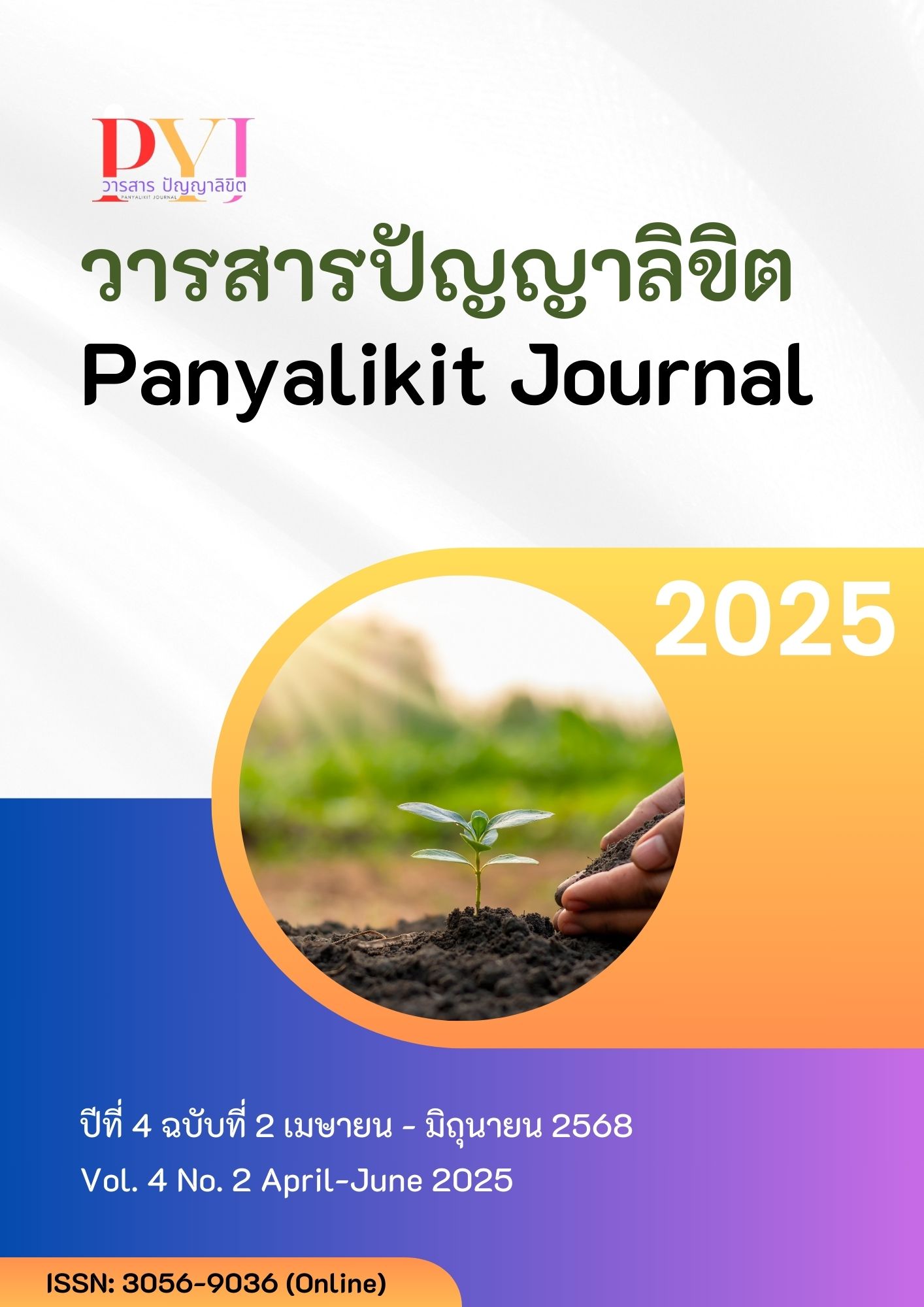Frozen Food Consumption Behavior of Residents in Chaiyaphum Province
Main Article Content
Abstract
This research article aimed to 1) study the frozen food consumption behavior of residents in Chaiyaphum Province, and 2) examine the marketing factors influencing their consumption behavior. The study employed a quantitative research approach. The population comprised 1,113,378 residents of Chaiyaphum Province, and the sample consisted of 400 individuals who consume frozen food, selected through convenience sampling. The research instrument was a questionnaire. The statistical methods used for data analysis included frequency, percentage, mean, standard deviation, t-test and ANOVA.
Findings for Objective 1: The results revealed that the frequency of frozen food consumption was 2–3 times per week. The most popular category was frozen seafood (26.25%), and the main reason for consumption was convenience (37.50%).
Findings for Objective 2: Marketing factors influencing consumption decisions included product (=4.25, SD = 0.85), price (=3.85, SD = 0.92), distribution channels (=3.72, SD = 0.88), and promotion (=3.45, SD = 1.02), respectively. Among these, product was the most influential factor, followed by price and distribution channels, while promotion had the least influence. Hypothesis testing indicated that demographic factors—gender, age, occupation, and income—had a statistically significant effect on frozen food consumption behavior. Moreover, marketing factors such as product, price, and distribution channels showed statistically significant correlations with consumption behavior at the 0.05 level, whereas promotion did not.
Contribution of the Study: The knowledge derived from this research is a model that demonstrates how frozen food consumption behavior is influenced by both demographic factors (gender, age, occupation, income) and marketing mix elements (product, price, place, and promotion). The model can be applied in marketing planning, product development, and communication strategy design tailored to consumer groups, especially in semi-urban and rural areas where consumption behavior is evolving alongside socio-economic changes.
Article Details

This work is licensed under a Creative Commons Attribution-NonCommercial 4.0 International License.
References
ชัชวรรณ วิชัยดิษฐ์ และ ฉันทนา ปาปัดถา. (2566). ปัจจัยที่มีผลต่อพฤติกรรมการบริโภคอาหารแช่แข็งในกลุ่มคนวัยทำงาน. วารสารวิทยาการจัดการ, 11(1), 85–98.
ธนาภรณ์ กิมาคม, สุภาพรรณ กิจดำรงค์ และ ปรีชา ไม้แก่นสาร. (2562). พฤติกรรมผู้บริโภคอาหารแช่แข็งของพนักงานออฟฟิศในเขตกรุงเทพมหานคร. วารสารการตลาดยุคใหม่, 5(1), 23–35.
วรรณา วันหมัด. (2563). ปัจจัยที่มีอิทธิพลต่อการเลือกซื้ออาหารแช่แข็งของแม่บ้านในเขตชานเมือง. วารสารพาณิชยศาสตร์และการตลาด, 8(2), 55–70.
ศูนย์วิจัยกรุงศรี. (2565). แนวโน้มธุรกิจอาหารพร้อมทาน ปี 2567–2569. กรุงเทพฯ: ธนาคารกรุงศรีอยุธยา.
สำนักงานกองทุนสนับสนุนการสร้างเสริมสุขภาพ. (2564). รายงานพฤติกรรมการบริโภคอาหารของคนไทย ปี 2564. กรุงเทพฯ: สำนักงานกองทุนสนับสนุนการสร้างเสริมสุขภาพ.
สำนักงานพาณิชย์จังหวัดชัยภูมิ. (2563). รายงานเศรษฐกิจการค้า จังหวัดชัยภูมิ ปี 2563. ชัยภูมิ: กระทรวงพาณิชย์.
สำนักงานสถิติแห่งชาติ. (2566). สถิติจังหวัดชัยภูมิ ปี 2566. กรุงเทพฯ: กระทรวงดิจิทัลเพื่อเศรษฐกิจและสังคม.
Chang, Y., Lee, S. & Park, H. (2021). The influence of convenience and health consciousness on frozen food consumption behavior. Journal of Consumer Research, 48(2), 210–225.
Johnson, L. & Brown, K. (2022). Gender differences in household food decision-making: A frozen food perspective. Journal of Nutrition and Behavior, 44(3), 156–164.
Kotler, P. & Keller, K. L. (2020). Marketing management. (16th ed.). London: Pearson.
Kotler, P. (2019). Principles of marketing. London: Pearson.
Lee, Y. & Kim, M. (2019). Income level and preferences for premium frozen food. Asia Pacific Journal of Marketing and Logistics, 31(4), 987–1003.

